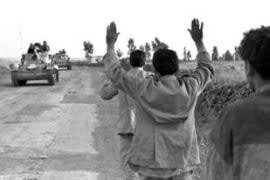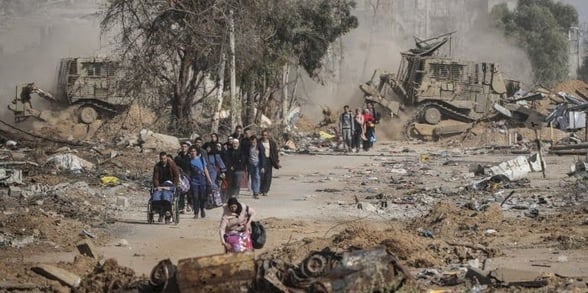The Ongoing Nakba: Israeli Occupation Strategies from Forced Displacement to Modern Genocide in the Erasure of the Palestinian Cause
Explore the ongoing Nakba and Israeli occupation strategies from 1948 to today, including forced displacement, siege, wars, and cultural erasure that threaten the Palestinian existence. Learn how evolving tactics serve a continuous goal: the erasure of the Palestinian cause.
OPINOINREPORT
Refaat Ibrahim
6/29/20255 min read


Introduction: An Unending Nakba
In 1948, the world witnessed the Palestinian Nakba, when over 750,000 Palestinians were expelled from their homes and villages in one of the largest ethnic cleansing operations in modern history, according to the Palestinian Information Center-WAFA. Massacres such as Deir Yassin and Tantura were committed, and hundreds of villages were destroyed, forcing Palestinians into exile and refuge.
However, the Nakba was not just a historical event but the beginning of a continuous colonial project aimed at erasing the Palestinian cause through evolving tools that serve one unchanging goal: the complete elimination of the Palestinian presence on their land.
From Forced Displacement to Control: The Evolution of Occupation Tools
1. The First Nakba: Terror and Ethnic Cleansing
In 1948, Zionist militias, which later became the Israeli occupation army, carried out massacres to spread terror among Palestinians. At Deir Yassin, over 100 civilians were killed, triggering a mass exodus out of fear of a similar fate, according to BADIL Refugee Rights Reports. More than 500 Palestinian villages were destroyed, and properties were confiscated under the “Absentees’ Property Law,” an Israeli law that enabled the seizure of lands belonging to refugees who had fled or were expelled, legally preventing their return.
Analysis: These policies were deliberate components of a demographic strategy to establish a Jewish state with a Jewish majority population. Forced displacement not only affected Palestinians materially but also severed their cultural and historical ties to their land, weakening their ability to claim the right of return.
2. Soft Occupation: Administrative Strangulation and Settlements
Following the occupation of the West Bank and Gaza Strip in 1967, occupation strategies shifted to administrative and economic control tools. Israel imposed strict building restrictions, demolished thousands of homes under the pretext of "lack of permits," and established a permit system restricting freedom of movement and work, as documented by Human Rights Watch.
Meanwhile, settlements in the West Bank expanded, now housing over 700,000 settlers, severing Palestinian land and rendering the establishment of an independent Palestinian state nearly impossible, according to the Euro-Mediterranean Human Rights Monitor.
Analysis: Settlements are not mere housing projects but geopolitical tools aimed at fragmenting Palestinian geography. Walls and settler-only bypass roads have created isolated “cantons,” hindering economic and social development and weakening Palestinian social cohesion. This system keeps Palestinians in a constant state of vulnerability, driving some to voluntary migration.
Modern Methods: Siege, Wars, and Starvation
1. Gaza Siege: Collective Punishment
Since 2007, Israel has imposed a comprehensive siege on Gaza, restricting the movement of 2 million residents and limiting access to electricity, water, and medicine, as reported by Al Mezan Center for Human Rights. Since October 7, 2023, the crisis has escalated with the prevention of food and medical supplies and the cutting of water and electricity, leading to a humanitarian crisis described by human rights organizations as "genocide," according to Human Rights Watch.
Analysis: The siege is not just a political tool but an economic and psychological weapon aimed at breaking the will of the population. By restricting basic resources, Israel seeks to create despair that pressures Palestinians to relinquish their political demands. This approach violates international humanitarian law, which prohibits collective punishment.
2. Wars on Gaza: Incremental Nakba
Israel has launched five major wars on Gaza since 2008, but the war starting in October 2023 is the deadliest, with over 56,000 Palestinians killed, mostly women and children, and 90% of infrastructure destroyed, according to the Palestinian Ministry of Health. The intense bombing forced hundreds of thousands into internal displacement without safe shelter.
Analysis: Repeated wars aim to destroy Gaza’s vital infrastructure, from hospitals to schools, making the territory uninhabitable. This tactic reproduces the first Nakba in a modern way, forcing residents to flee under relentless bombardment while crossings remain closed.
3. Starvation and Disease as Weapons
Israel has prevented the entry of food aid and targeted civilians gathering for aid distribution. It has also blocked patient travel, particularly for cancer and kidney failure patients. The Palestinian Ministry of Health reports 546 deaths due to lack of treatment, with 11,000 cancer patients denied care.
Analysis: Using hunger and disease as weapons represents a dangerous evolution in occupation strategies. This policy targets not only resistance fighters but the entire community, dismantling the social fabric and making daily survival a challenge. This marks a shift from direct displacement to creating conditions that force people to abandon their land.


Constant Goals with Evolving Methods
From “A Land Without People” to “A People Without the Means to Live”
The Zionist slogan “A land without people for a people without land” has transformed into a policy that strips Palestinians of the essentials for life: no food, no medicine, no security, and no education. This strategy aims to weaken political and cultural resistance without the need for direct mass expulsion.
Analysis: The approach keeps Palestinians in a state of permanent fragility, reducing their capacity to organize politically or economically. International roles, especially the United States’ support for Israel, provide political and military cover that hinders international accountability, as documented by Al Jazeera reports.
Dismantling Palestinian Identity
The occupation targets cultural identity through:
Banning educational books that carry the Palestinian narrative.
Imposing distorted curricula in occupied Jerusalem.
Persecuting journalists and banning cultural institutions, as reported by the Euro-Mediterranean Monitor.
Analysis: Erasing cultural identity aims to sever new generations from their history, weakening the Palestinian narrative globally. This approach is supported by international pressures that label Palestinian resistance as “terrorism,” limiting Palestinians’ ability to voice their cause in Western forums.
Arab Normalization: A New Dimension
Arab normalization with Israel, as in the Abraham Accords, has reduced regional pressure on Israel, allowing intensified policies of displacement and settlement without unified Arab resistance, as reported by Al Jazeera.
Analysis: Normalization has weakened Arab solidarity with Palestinians, making the cause more reliant on popular resistance and international civil society support. This shift reflects changing regional dynamics where the Palestinian cause is less of a priority for some Arab governments.
The Nakba Today:
Multiple Faces of a Single Crime
In Gaza: Documented genocide with complete infrastructure destruction.
In the West Bank: slow cleansing through settlement expansion and home demolitions.
In Jerusalem: Judaization and seizure of homes to replace residents.
In the Diaspora: Denial of the right of return and political marginalization.
Analysis: These diverse forms of Nakba reflect a comprehensive strategy to control land and people. In the West Bank, settler violence causes gradual displacement, while in Gaza, war turns life into hell. This variety in methods aims to fragment Palestinian efforts to resist.
Conclusion: Between Nakba and Unwavering Resistance
The Nakba is not merely a historical memory but an ongoing reality aimed at erasing Palestinian existence. Yet, the steadfastness of the Palestinian people, from holding onto their land to documenting their suffering, keeps the cause alive. Despite the evolving tools of oppression, Palestinian resilience and international solidarity continue to challenge the occupation’s relentless attempts to erase their identity and rights. The struggle for justice and dignity persists, reminding the world that the Nakba’s story is far from over.
Sources:
Palestinian Ministry of Health Official website: https://www.moh.gov.ps/portal/en/
Palestinian Information Center—WAFA Official website: https://english.wafa.ps/
Human Rights Watch Official website: https://www.hrw.org/
Euro-Mediterranean Human Rights Monitor Official website: https://euromedmonitor.org/en
Al Jazeera Network Official website: https://www.aljazeera.com/
BADIL Resource Center for Palestinian Residency and Refugee Rights Official website: https://badil.org/
Al Mezan Center for Human Rights Official website: https://www.mezan.org/en
Awareness
Documenting reality, amplifying Palestinian voices, raising awareness.
Contact Us:
resistant.p.pens@gmail.com
Follow our social media
